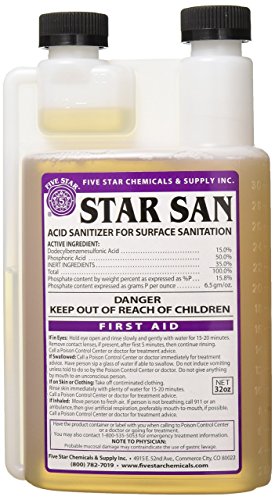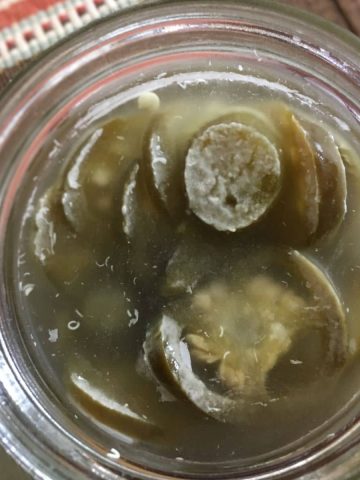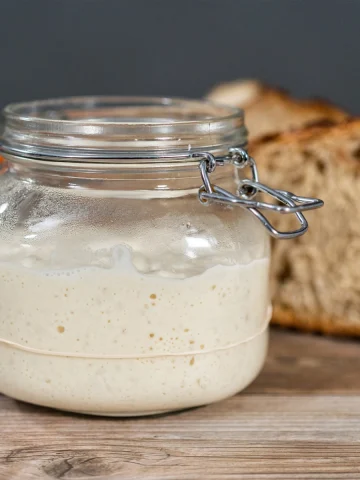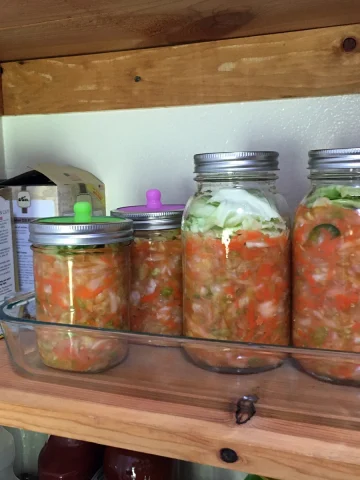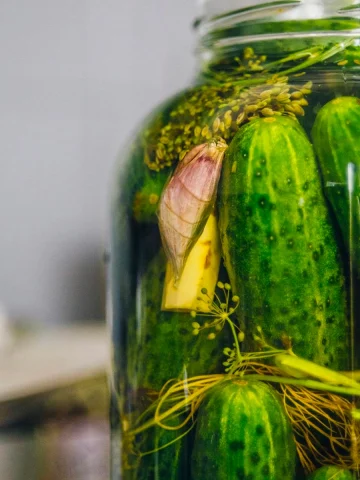Back-sweetening is a technique used to improve the taste of a dry or bitter mead. After the fermentation is complete and stabilized, you add honey or sugar to the mead to increase the level of sweetness.
Have you ever tasted a finished batch of mead and found the flavor to be too dry or bitter? Continue reading for more details on why, when, and how to back sweeten mead.
Back-sweetening mead is a simple process and can be done in a few easy steps with a couple of simple ingredients.
Is Mead Naturally Sweet?
Mead is made by fermenting honey. And because honey is the main ingredient, most people have a common misconception mead is a naturally sweet alcoholic beverage.
However, people don't often realize that most of the honey is eaten up by the yeast during fermentation, depleting honey's sweetness and resulting in a dry mead or a flavor that you were not expecting.
The problem here is that the fermentation process can change the sweetness of honey and lead to a drink that tastes quite different from what you were hoping for.
What Is Back Sweetening?
Back Sweetening is a technique used by homebrewers to sweeten a finished mead. It will make the mead sweeter. If the mead is too bitter, back-sweetening it with sugar or honey is a great solution.
Related Topic: How To Cold Crash Mead
When To Back Sweeten A Mead
Back-sweetening mead sounds like a simple process, but things could get ugly if done carelessly. The best time to start back sweetening is when the mead is finished fermenting. Because adding straight honey to your mead could kickstart yeast activity and start the fermentation process over again.
Furthermore, if you bottle the mead right after adding the honey, you could have some homemade bottle bombs on your hands.
Bottles exploding is avoidable, though, with a little bit of patience and science.
Potassium sorbate is the best and safest way to back-sweeten mead at the end of active fermentation.
Potassium sorbate is a yeast inhibitor - it makes it possible to add sugar or honey to mead without activating the fermentation process.
To do this, follow a few simple instructions and remember: start small and be patient.
How To Back Sweeten A Mead After Fermentation Or Before Bottling
Follow these instructions on properly back-sweeten mead without causing an explosive disaster from a second fermentation.
1. Ensure the active fermentation is complete.
It is essential to make sure the fermentation process has finished and stabilized. Take hydrometer readings to confirm.
By allowing active fermentation to finish, you're less likely to end up with a bottled mead exploding in your face.
Last update on 2025-05-19 / Affiliate links / Images from Amazon Product Advertising API
2. Transfer your mead to a secondary fermenter
Ensure the secondary fermenter or container is properly sanitized, then transfer the mead into the vessel.
3. Add Potassium Sorbate
Start by adding the potassium sorbate to the mead in the new vessel. Always pay attention to the recommended dosage instructed on the packages as they can have differing strengths.
A typical dosage: add½ tsp. of potassium sorbate per one gallon of mead
Potassium Sorbate is great for slowing yeast down and preserving mead.
Potassium Sorbate is not a sweetener agent; it is a chemical that will inhibit the yeast from restarting the fermentation process.
4. Let the mead sit for two days in the secondary fermenter
After adding potassium sorbate to the secondary fermenter, give it time to work its magic. Let it rest to ensure that all fermentation has subsided and that it's safe to add the sweetener of your choice.
5. Add honey or sugar
Adding honey or sugar is the actual back-sweetening step.
Add small amounts of honey or sugar and slowly stir into the mead. Take a small sample test of the mead, and then repeat as needed until you achieve the correct level of sweetness. Make sure all tools that come in contact with the mead are properly sanitized.
It is common to use honey to sweeten a mead. However, you can use many types of sugar to improve mead. White sugar, brown sugar, artificial sweeteners such as Stevia, maple syrup, apple juice concentrate, grape juice or other fruit juices, sugar syrup, and raw cane sugar are all options to explore.
Once the mead has reached its desired sweetness, it is ready to be bottled and enjoyed.
Back-sweetening is a great way to sweeten a bitter mead and is a surefire way to get a satisfying result.
Just be sure to let fermentation conclude and that you add honey or sugar in small increments. Now that you know how to back-sweeten mead try it for yourself.
FAQ About Backsweetening Mead
What Does Potassium Sorbate Do To A Mead?
Potassium sorbate is a chemical that prohibits further fermentation. In contrast, potassium sorbate cannot stop a fermentation already in progress. It can, however, prevent it from restarting if you have completed fermentation.
It allows you to add additional sugars to the mead without the chances of the yeast coming back to life.
How To Back Sweeten Mead WITHOUT Potassium Sorbate?
1. Add a sweetener by the glass
A quick and easy way to back sweeten mead without adding the chemicals Potassium sorbate is to sweeten by the glass.
Pour a glass of mead and mix in just a tiny bit of sweetener until it reaches the desired flavor.
2. Add more honey at the start
The easiest way to avoid the step of back sweetening mead and the use of potassium sorbate altogether is to add more honey to the recipe from the start.
Check out our 1-Gallon Honey Mead Recipe
For example, if the recipe calls for three pounds of honey, add 3.5 lbs. of honey instead.
Adding more honey at the beginning will help you avoid adding the chemicals Potassium Sorbate to the mead.
It's always preferable to avoid adding extra chemicals to the foods/drinks you consume.
Final Thoughts
Back Sweetening is a technique used by homebrewers to sweeten a finished mead, wine, or cider.
This article taught us what back sweetening mead is and the how, why, and when of back sweetening a mead.
We talked about the possibility of exploding bottles if you don't back sweeten a mead properly.
Remember, back sweetening mead is a simple process. It's essential to follow the steps correctly.
An extra tip for everyone is if you want to avoid back sweetening mead altogether, then add a little extra honey to the recipe at the start.
Stay safe, and enjoy making mead!



